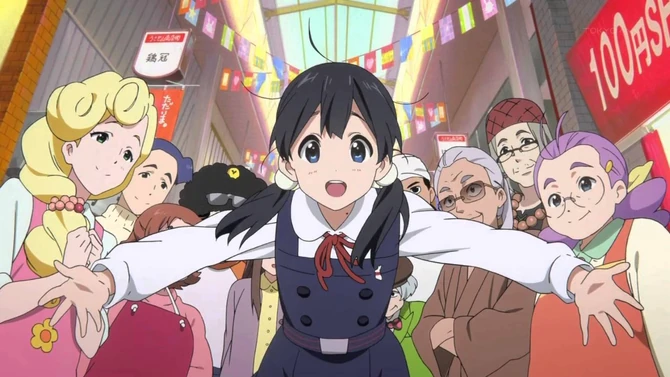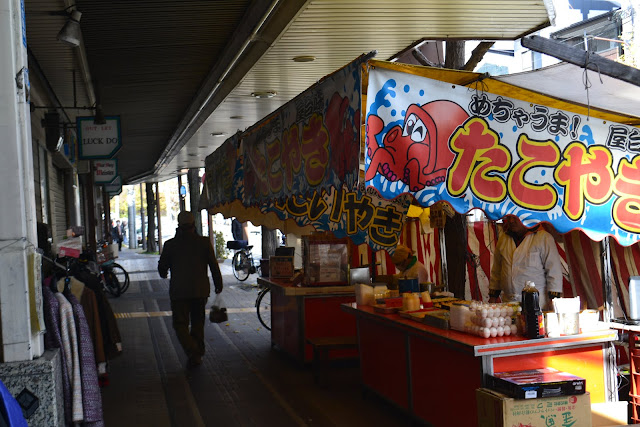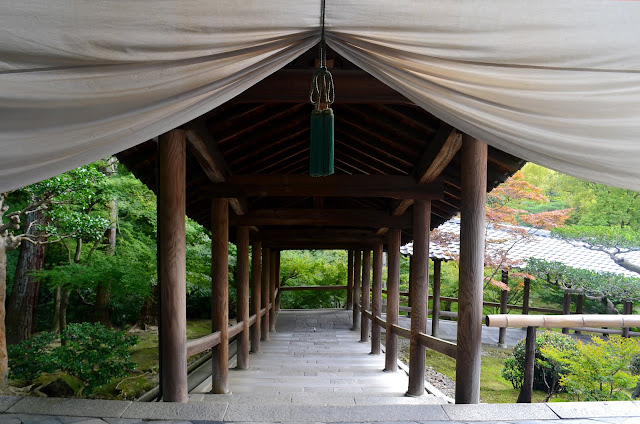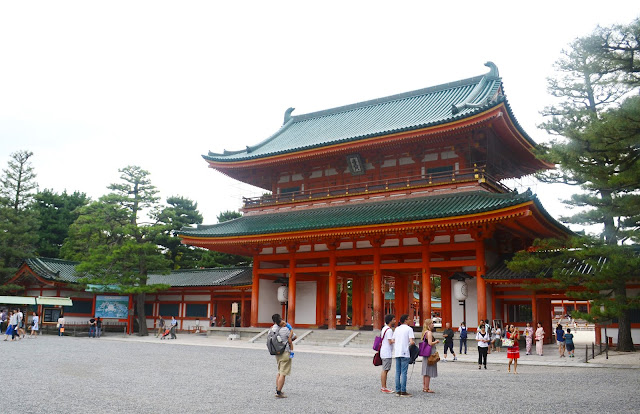When I moved house almost 2 weeks ago I had no idea know what to expect from my new local area. I knew its location on the map, I knew that it was fairly central in Kyoto, and that was all that mattered to me. Turns out it was a wonderful choice for more than just the location. My favourite thing about living here has been a total surprise; the Demachi shopping arcade just outside my house.
I think this place is an absolute gem in Kyoto. I pass through it every morning on my way to Kamogawa river, and it feels like I'm being transported back in time. Each shop has its speciality; fruit & veg, tofu, mochi, fish, tempura, beans, all sorts. Instead of heading to the nearest supermarket for everything I need, I find myself dashing back and forth between the shops buying things one by one and slowly trying to make myself familiar with each one.
Actually, this is a much cheaper way to shop in Japan. For fruit & veg in particular, the supermarkets have unbelievably high standards and only buy/sell the very best products for crazy high prices. I think that this sucks for the farmers, the consumers and the environment. Demachi market on the other hand doesn't have to meet these standards and buys straight from the producers; life suddenly becomes much cheaper, you still get great food, and you're helping to keep the wonderful local community alive. Win win win.
But aside from the cheaper cost, I just love the atmosphere in this street. The shop-owners are always popping out to chat to each other and recognise many of the faces that go past. I live in Brighton back in the UK which is known for being full of creativity and vibrancy, but I've never experienced anywhere with a community quite like here. I guess lots of places used to be like this, when we didn't have convenience and department stores at our disposal. It's awesome that Demachi market keeps doing what it's doing and I feel very happy to be a small part of it.
Demachi Shotengai actually inspired the setting for a well-loved Japanese anime called Tamako Market. It follows the adventures of a girl whose family owns a mochi (rice cake) shop there. I'm 2 episodes in, and although it might be aimed at an audience a *little* bit younger than me, it's still really adorable and easy to watch. I love spotting parts which I recognise from real life - you can see below the flag bunting and the 100yen shop which are both real features.

Anyway, rather than brushing off the anime as childish pop-culture the market seems to have embraced it - you can see little touches everywhere, in particular the hanging posters on the street. Fans of the anime come to the market to see the real-life setting, and in one of my favourite restaurants there's a guestbook with notes and drawings from the visitors. It has given the market a little bit of a celebrity status and the shop-owners seem happy to use that to their advantage.
Some of my favourite shops...
1) This fruit and veg shop.
Anyone who has lived in Japan will know that 280yen for a big bunch of grapes, or 150yen for a bag of 10 carrots is amaaazing. If you haven't lived in Japan then that's really boring information for you, but it makes me very happy.
2) The 100yen shop.
100yen is roughly 75p, so it's like Poundland in the UK but even better. It sells stationary, kitchen equipment, household goods, food, decorations, anything you can think of. OK I know this is a huge chain in Japan and not exactly one of the quaint local shops I have been talking about, but as a broke student this place will always have a special place in my heart.
3) The okonomiyaki, takoyaki and taiyaki stands
These don't 100% count as Demachi Shotengai since they're just outside, but I still consider them part of the street. Okonomiyaki is hard to describe, but it's kind of like a.. fried cabbage potato pancake. It used to be what poor people in Japan ate because it's just a mish-mash of easy ingredients - kind of like bubble and squeak in the UK (potato, cabbage & any other roast dinner leftovers fried together). But then they add things like squid or seaweed to make it more... Japan. Takoyaki is octopus fried in batter. Taiyaki is fish shaped pancakes, usually filled with red-bean paste or custard. I tend to avoid the takoyaki since I still can't get my head around octopus, but if I need a quick and cheap lunch then okonomiyaki and taiyaki do the job perfectly and are only 400 yen together (less than £3 and much better/more filling than a UK meal deal).
So yes, as you can tell, I love my new area. Obviously my location in relation to Kyoto city was the main selling point but actually, I could stay within the 10 minute radius of my house and probably be happy for the rest of the year.
This link has loads more information about the history of the market so I'm going to leave it here and come back to read it when I'm not drowning in work and to-do lists:

























































